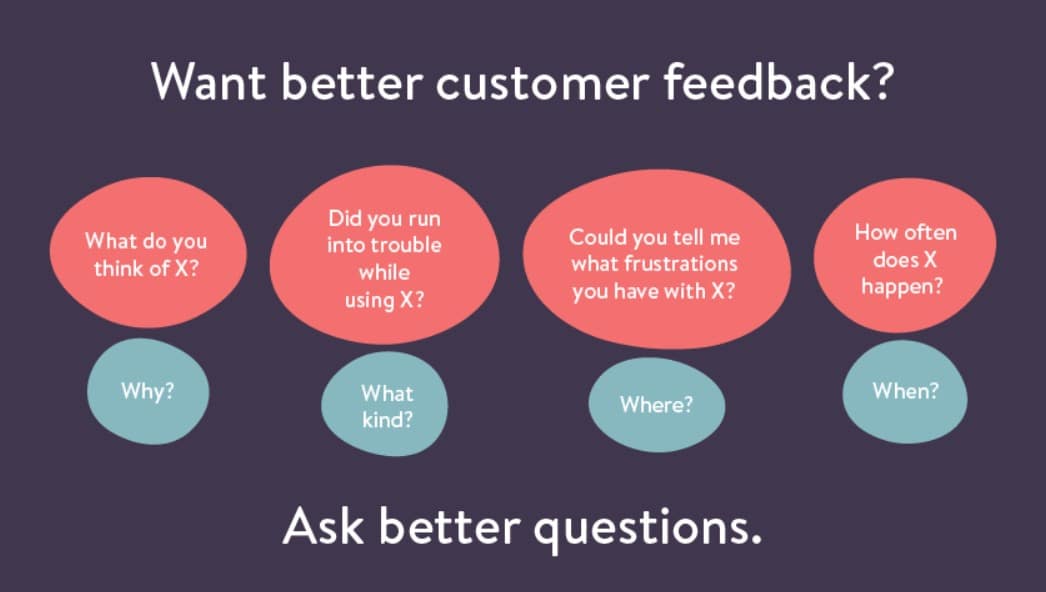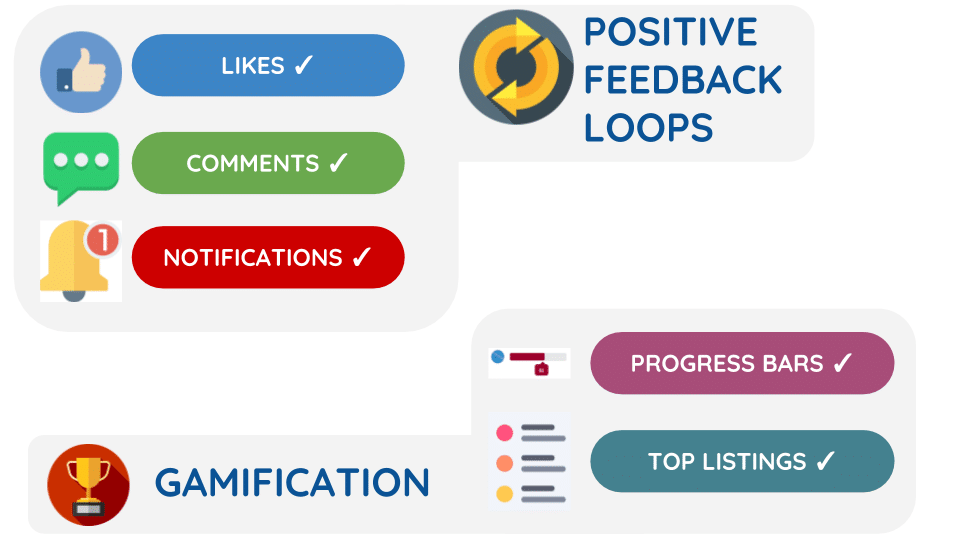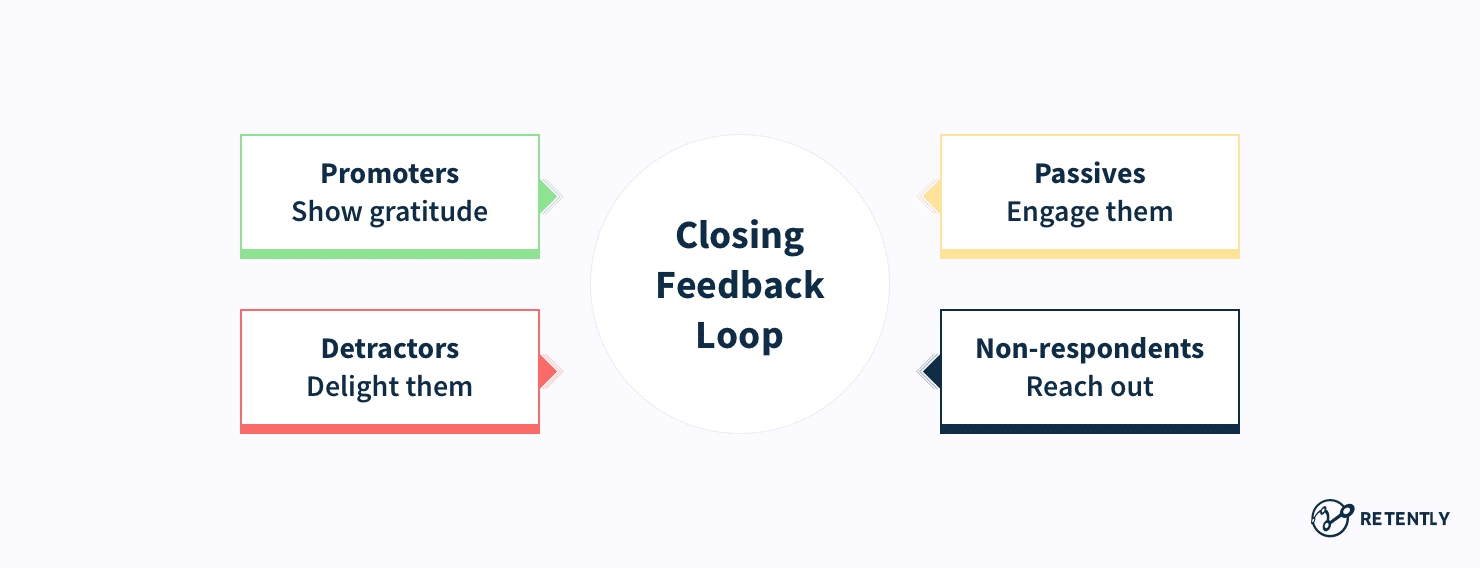How to Create Continuous Feedback Loop for Product Success
Continuous feedback is the foundation of the success of every product. From roadmap planning to product design and feature upgrades, the process may seem like never-ending work. But seeing your customers satisfied makes all the effort worthwhile.
Determining customer satisfaction can be a challenging task. Churn and low adoption rates may indicate issues in a product. However, they don’t provide the underlying factors contributing to why customers are leaving or not using your product.
Understanding your customers’ needs is crucial for sustaining your product’s appeal and usability in the long run. Hence, soliciting continuous feedback must be on every product team’s agenda.
Let’s tackle what continuous feedback is and what it takes to be effective.
Table of Contents
- What is continuous feedback?
- Benefits of continuous feedback loops
- A step-by-step process for creating continuous feedback loops
- Questions to ask for continuous feedback
- Conclusion
- Machine Learning In Finance: 12 Essential Applications
- How To Create Interactive Compliance Training For Bank Employees
- How Fintech Apps Are Using Gamification To Increase User Engagement
- Top Gamification Companies for Employee & Customer Engagement
What is continuous feedback?
Continuous feedback is a process that involves capturing valuable real-time insights directly from users. You can achieve it using continuous feedback methods like surveys, one-on-one interviews, and feedback tools like heatmaps or session recordings.
The aim is to gain insights into your customers’ thoughts about your product. To know their preferences and uncover actionable steps to improve their satisfaction.

Source: productboard
Listening to continuous feedback shows commitment to delivering meaningful value to your customers. It doesn’t just lead to reduced customer churn but also increased customer acquisition.
Feedback loops are a series of steps involving receiving, analysing, and acting on constructive feedback. All of these aim to foster continuous improvement and increase customer satisfaction.
- Positive feedback loop – This feedback loop focuses on your areas of excellence. So, you can ensure the continuation of excellence and replicate those experiences for various user groups.
- Negative feedback loop – A negative feedback loop identifies product or user experience shortcomings.
Benefits of continuous feedback loops
Building a successful product requires more than just gathering customer feedback once or twice. Just like how time changes, so do the needs of your users. Staying ahead in the competition demands comprehension of customer needs and essential features.
If you want to provide quality service to your customers, gathering formal or informal feedback is the way to go.
With regular feedback, your company would have direct customer interactions. This enables quick implementation and testing of minor changes derived from those interactions. A continuous feedback model allows you to determine further adjustments, avoiding potential issues.
Your customers’ needs are constantly in flux, never static. Users may like your product in year one to year three, but by that time, their preferences must’ve changed.
Users’ expectations of your product will likely change even if their commitment remains. To keep up with these evolving needs, maintain continuous customer interaction.
Like dominoes, when users adopt your product, all aspects of their workflow must also be adopted.
A step-by-step process for creating continuous feedback loops
A system is essential to ensure a constant feedback loop’s effectiveness. This system includes people who are responsible for gathering and analysing meaningful feedback. It also includes a process that prioritises customer needs.
Here is a step-by-step process to create continuous feedback loops.
#1. Arrange round-robin interviews with your whole team
A customer success manager focuses on ensuring that the customer achieves their goals. On the other hand, product managers focus on the product’s future needs and continuous improvement.
Involving developers and designers in product discussions will improve the product development process. They aim to understand the customer’s journey and pain points. They then find solutions by focusing on how to resolve these issues.
Each participant’s unique viewpoints can enhance the discussion. These allow you to uncover various problems during one interview.
#2. Collect feedback
Want to get helpful feedback that fuels product innovation? Learn how to collect useful feedback.
Successful customer engagement begins by prioritising active listening. Multiple teams connect with customers by posing relevant questions to grasp their product usage. They seek frequent feedback to enhance the customer’s experience and identify areas for improvement.

Source: kayako
Some companies use online platforms to give feedback for product improvement. It helps them align with user demands and deliver accordingly.
Asking questions and listening are just the tip of the iceberg. Further investigation is vital. Dig deeper into the customer’s needs beyond their initial comment.
To do this, you must empathise with your customer’s pain as if it were yours. Creating meaningful solutions becomes easier when you can empathise.
Here are methods you can use for gathering continuous feedback:
Qualitative methods
- Interviews – offer real-time insights into customer product usage and their reasons for using it. Gain insights on product performance and validate assumptions about customer behaviour. Ask open-ended questions such as who, where, and how. Encourage thoughtful responses to these types of questions.
- Customer advisory boards – This method serves as a forum where existing customers can share feedback and provide valuable input to your decision-making process. They offer strategic guidance on product, market, and industry trends. These structured conversations yield ideas to guide the product roadmap and help the team prioritise their next building steps.
- User forums – This strategy allows members to share messages and discuss your product. Forums help feature requests, idea sharing, and discussions on unique product usage. Actively participate in discussions to better understand users and know which areas to focus on.
Quantitative methods
- Polls – Polls offer product managers a way to gather quantitative feedback on customer sentiment. Typically, these consist of a product-specific inquiry and a few multiple-choice answers. Poll data serves two purposes: validate assumptions and gain insights into diverse groups’ sentiments towards your product.
- Analytics – Product analytics tracks and analyses user behaviour. This data equips product managers with an understanding of the path chosen by each customer and how they engage with the product. Typically, this allows you to examine data in aggregate or zoom in on specific users.
Both qualitative and quantitative methods
- Ideas portal – This method can serve as a platform for customers to submit product suggestions. Customers can share their current pain points and ideas at any given time. In turn, you can directly communicate with those who have provided feedback.
- Customer-facing teams – Regular communication across functions is vital for maximising insights. It can improve communication among staff members and build stronger relationships. It also enables them to vote for ideas on behalf of customers, sharing user feedback they receive as a representative.
- Survey – Product managers use surveys to gain customer insights by asking questions. They provide a cost-effective and scalable option to receive feedback on various subjects. Survey data serve as valuable evidence to transform assumptions into facts.
Using Gamification to collect customer feedback
Another excellent way to collect customer feedback is through gamification. It’s the process of applying game-like strategies to collect feedback.
Feedback gamification is a great way to boost user engagement and make them feel involved in product development. You can make it more engaging and fun by incorporating badges, points, leaderboards, and prizes into the feedback-collecting process.

Source: makerble
To effectively implement gamification in your continuous feedback loop, you need to focus on the following:
- User experience – Your utmost priority must be to keep it easy and straightforward. Think of ways to introduce this process in a way that is already familiar to your users. Since users associate the thumbs-up icon with positive feedback, you can adapt it to provide a lightweight experience.
- Engage playfulness – The main goal of gamification is to make your platform playful. You can motivate your users to cooperate by transforming a simple survey into a game. Ask them to compare your product with other brands through graphics. This will provide you with qualitative feedback.
- Reward, reward, reward – When your users learn that their feedback earns them certain rewards, they will look for ways to do it more. So do it! Create daily challenges with user privileges such as discounts, coupons, or cash prizes. You’ll be surprised at the positive effects a rewards system can provide to your customers.
When receiving feedback becomes challenging, implementing feedback gamification can provide you with the results you’re looking for. Make it a challenge for your users and motivate them through enticing rewards and perks.
#3. Create a feedback system
Make sure to establish a reliable feedback system of record at all times. This system becomes the definitive source of truth for consolidated and aggregated feedback. Its design focuses on facilitating roadmap planning across various feedback sources.
The goal is to establish a highly systemised process, enabling quick and efficient processing of constant feedback from different sources. Each unique piece of feedback should include a brief description of one or more features or product categories it pertains to. It should also include the names or counts of the requestors.
After that, it should be effortless to categorise and arrange all the information based on frequency.
You can create a feedback system using one of these three ways:
- Spreadsheet – The most straightforward way is to generate a shared Google spreadsheet with columns allocated for the description, category, and requestors. This approach’s quick and affordable way of adding and reviewing information can benefit you. The only disadvantage of using spreadsheets is using an extra tool apart from your project management tool.
- Project management tools – Alternatively, product managers often use a project management tool to monitor all the feedback. This method eliminates the need for redundant bookkeeping across many tools and often also offers robust reporting capabilities.
- Product roadmap tools – A product roadmap tool has advanced features that efficiently capture and analyse roadmap request data. These tools are advantageous due to their specialised design but come with costs and training requirements.
#4. Analyse
Once you receive customer feedback, the next task involves analysing and processing it.
Quantitative feedback is advantageous for identifying trends and patterns. And what’s good about it is that conducting it is pretty simple.
On the contrary, analysing qualitative feedback presents more challenges and requires more time. This is especially true if you lack suitable tools to tag responses.
Still, it’s crucial to understand user behaviour and identify issues they encounter.
#5. Apply
Apply your newfound knowledge by creating a set of actionable points. For instance, if your checkout page is too complex, collaborate immediately with your designers. Devise a plan to determine the best approach to simplify it.
This process ensures the closure of your continuous feedback system, allowing you to convert insights into actions. Instead of gathering data without a clear purpose, close customer feedback loops to drive product enhancement and elevate customer retention.
#6. Close the feedback loop
Closing the feedback loop is the process’s final and most important step. It’s the process of working on the feedback, implementing the changes, and informing the customers about it.

Source: retently
Successful loops bring benefits to both you and your customers. When you get your customers to provide feedback, it enhances inclusivity and boosts customer loyalty. That’s why they must know about it when their suggestions or complaints are heard.
Closing the loop is necessary because it’s one of the reasons why you asked for feedback in the first place. Not doing this part of the process defeats the purpose of continuous feedback performance management.
Questions to ask for continuous feedback
Customer surveys and interviews serve as valuable tools for capturing user perspectives. But what specific questions should be asked to get the most effective feedback for product improvement?
To encourage ongoing feedback, consider incorporating these questions into your continuous feedback process:
- Suppose our product vanishes from the market tomorrow. Would you try to find a competitor or be comfortable living without it?
- How frequently do you find yourself using our product?
- What specific goal or purpose do you have in using our product?
- What obstacles or challenges are hindering you from reaching this goal?
- What is the biggest issue or worry you have about the functionality of our product?
- What specific impacts or changes have you noticed from using our product?
- What specific reasons led you to choose our product instead of competing alternatives?
- What uses do you find for our product in daily life?
- Have you used something similar to our product before?
- What specific areas do you believe our product needs the most improvement on?
- What about our product most impresses you?
- What specific characteristics or drawbacks of our product do you like the least?
Conclusion
A continuous feedback loop lets your product team stay ahead of the curve. Treat it as a golden chance to optimise your product and create a memorable customer journey.
Additionally, make a point of using your product to understand the consumer experience.
With these insights in their arsenal, your product team will be confident that they are delivering products customers will highly desire.
Looking to create the best continuous feedback loop? Our experts at Mambo can help you reach your full potential through gamification. Book a demo now!
Download your free
“Gamification Guide”
Get your PDF now and start transforming your approach to digital engagement!
Latest Posts
Machine Learning In Finance: 12 Essential Applications
The impact of machine learning on finance is significant. Thanks to this technology, financial institutions are now equipped to make efficient decisions. Through the analysis of data sets, machine learning […]
How To Create Interactive Compliance Training For Bank Employees
Banking compliance training isn’t just another task. It’s the stage where everything else performs. Banks must navigate a myriad of regulations and laws. After all, this is a trust-driven, high-stakes […]
How Fintech Apps Are Using Gamification To Increase User Engagement
Discover how gamification in fintech is revolutionizing financial engagement, making banking fun & boosting user loyalty.





